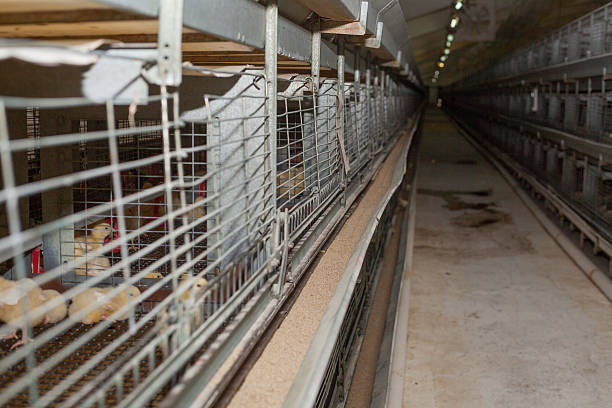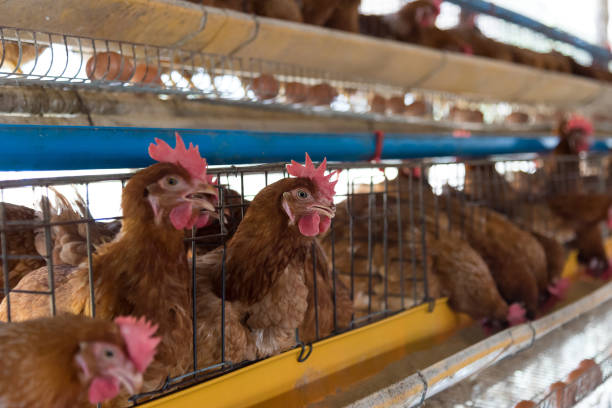Essential Poultry Cage Equipment Checklist for Successful Chicken Farming in Africa
Essential Poultry Cage Equipment Checklist for Successful Chicken Farming in Africa
Chicken farming in Africa is a rapidly growing industry, offering significant opportunities for entrepreneurs and contributing to food security. However, success in this sector hinges on adopting best practices, including the utilization of appropriate equipment. Among the most critical investments is the poultry cage system. This checklist provides a comprehensive overview of essential poultry cage equipment necessary for successful chicken farming operations in Africa, focusing on egg-laying hens and broilers.
Understanding the Importance of Proper Poultry Cage Equipment
Before diving into the checklist, it’s important to understand why proper equipment is so crucial for success. Efficient and well-maintained equipment directly impacts:
Bird Health and Welfare: Adequate space, proper ventilation, and easy access to food and water are vital for healthy birds, reducing disease outbreaks and mortality rates.
Production Efficiency: Well-designed cages optimize egg production (for layers) and weight gain (for broilers), maximizing output per bird.
Labor Efficiency: Automated systems and ergonomic designs reduce labor costs and streamline daily tasks.
Hygiene and Sanitation: Properly designed cages facilitate manure removal, maintaining a cleaner environment and reducing the risk of disease.
Profitability: Ultimately, all these factors contribute to improved profitability and a sustainable chicken farming business.
Poultry Cage Systems: Layer vs. Broiler
The specific equipment needed varies depending on whether you are raising egg-laying hens (layers) or meat chickens (broilers). Layer cages are designed to maximize egg production and collection, while broiler cages prioritize rapid growth and weight gain.
Essential Equipment Checklist for Layer Chicken Cages
Layer Cages: The foundation of the operation.
Type: Choose from A-frame cages, H-frame cages, or flat-deck cages based on farm size, budget, and desired automation level. H-frame cages offer better ventilation and manure management, while A-frame cages are generally more affordable. Flat-deck cages are ideal for smaller-scale operations.
Material: Galvanized steel is the most common and durable material. Hot-dipped galvanized steel offers superior rust resistance, especially important in humid climates.
Cage Dimensions: Ensure adequate space per bird according to local regulations and best practices. Overcrowding leads to stress and reduced egg production. The space allocated to each bird can refer to the number of square inches per bird, influenced by the size of the chicken, breeds or hen days, size and dimensions of the poultry house, cost of the system etc.
Layout: Consider the farm’s layout and future expansion when planning the cage arrangement.
Automatic Feeding System: Essential for consistent and efficient feeding.
Type: Chain feeding systems, trough feeding systems, and automatic pan feeding systems are common choices. Chain or trough feeding systems are suitable for smaller to medium-sized operations, while automatic pan feeding is best for larger farms.
Feed Delivery: Ensure the system delivers feed evenly to all cages, minimizing feed wastage.
Feed Storage: Adequate feed storage capacity is crucial. Silos or feed bins should be weatherproof and rodent-proof.
Feed Composition: Providing a balanced and nutritious diet is critical for egg production. The composition of the feed contains the proteins, carbohydrates, vitamins and minerals that support optimum growth.
Automatic Drinking System: Provides a continuous supply of fresh water.
Type: Nipple drinkers, cup drinkers, or trough drinkers are available. Nipple drinkers are generally preferred for hygiene and water conservation.
Water Source: Reliable water source is critical. Consider a well or borehole if municipal water is unreliable.
Filtration: Install a water filter to remove impurities and prevent blockages in the drinking system.
Medication Dispenser: Integrate a medication dispenser to easily administer medications and vaccines through the drinking water.
Automatic Egg Collection System: Streamlines egg gathering and reduces labor.
Type: Conveyor belt systems are the most common.
Egg Handling: Ensure gentle handling to minimize egg breakage.
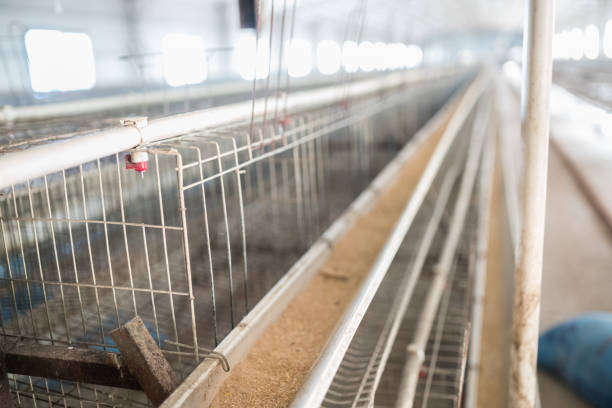
Egg Storage: Provide a cool, dry storage area for collected eggs.
Grading and Packing: Incorporate egg grading and packing equipment to prepare eggs for market.
Manure Removal System: Essential for maintaining hygiene and reducing odor.
Type: Scraper systems, belt systems, or flushing systems are available. Belt systems are commonly used with H-frame cages.
Manure Storage: Plan for proper manure storage or composting to minimize environmental impact.
Odor Control: Consider odor control measures such as biofilters or composting additives.
Ventilation System: Crucial for maintaining air quality and temperature control.
Type: Natural ventilation or mechanical ventilation (fans) are options. Mechanical ventilation is recommended for larger operations or in areas with extreme temperatures using exhaust fan, air inlet etc.
Air Circulation: Ensure adequate air circulation throughout the poultry house to remove ammonia and moisture.
Temperature Control: Maintain optimal temperature for egg production. Heating and cooling systems may be necessary in some climates.
Lighting System: Influences egg production and bird behavior.
Type: LED lights are energy-efficient and long-lasting.
Light Intensity and Duration: Control light intensity and duration to stimulate egg production.
Timers: Use timers to automate the lighting schedule.
Climate Control System: The integration of a climate control system enables a constant temperature that promotes the chickens’ development.
Essential Equipment Checklist for Broiler Chicken Cages
Broiler Cages: Designed to accommodate rapid growth and maximize meat production.
Type: Similar to layer cages, options include A-frame, H-frame, and flat-deck cages. However, broiler cages are generally larger and more robust to accommodate heavier birds.
Cage Dimensions: Provide adequate space per bird based on target weight and breed.
Flooring: Choose flooring that is easy to clean and provides good traction for the birds. Plastic slat flooring is a common choice.
Automatic Feeding System: Similar to layer systems, but designed for broiler feed and growth rates.
Type: Pan feeding systems are well-suited for broilers, providing easy access to feed for all birds.
Feed Level Control: Adjust feed levels to match the birds’ growth stage.
Automatic Drinking System: Provides a continuous supply of fresh water.
Type: Nipple drinkers are common and help minimize water wastage.
Water Pressure: Adjust water pressure to suit the birds’ age and size.
Ventilation System: Critical for removing heat and moisture, especially during the rapid growth phase.
Type: Tunnel ventilation systems are commonly used in broiler houses to provide consistent airflow.
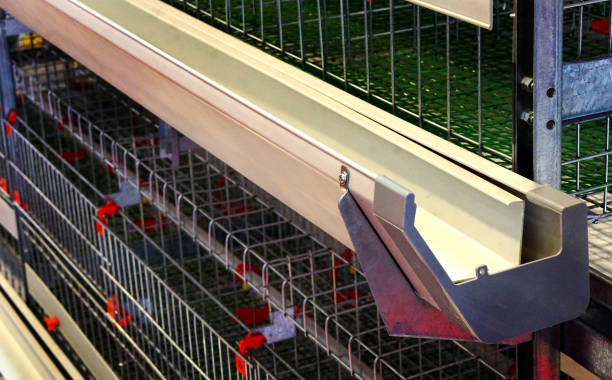
Air Speed: Maintain optimal air speed to cool the birds and remove ammonia.
Heating and Cooling System: Maintaining a consistent temperature is crucial for broiler growth.
Heating: Brooders or space heaters are used to provide warmth during the early stages of growth.
Cooling: Evaporative cooling pads or fogging systems can help lower temperatures during hot weather.
Lighting System: Influences growth rate and feed conversion.
Type: LED lights are energy-efficient and can be dimmed to adjust light intensity.
Light Programs: Implement lighting programs to optimize growth and reduce aggression.
Manure Removal System: Efficient manure removal is essential for maintaining hygiene and reducing the risk of disease.
Type: Scraper systems or litter removal systems are commonly used.
Litter Material: Choose appropriate litter material such as wood shavings or rice hulls.
General Equipment for Both Layer and Broiler Farms
In addition to cage-specific equipment, several general items are essential for any poultry farm:
Biosecurity Equipment:
Foot Baths: Disinfectant foot baths at the entrance to the poultry house.
Hand Sanitizers: Hand sanitizers for workers.
Protective Clothing: Overalls, boots, and masks to prevent disease transmission.
Scales: For weighing feed, birds, and eggs.
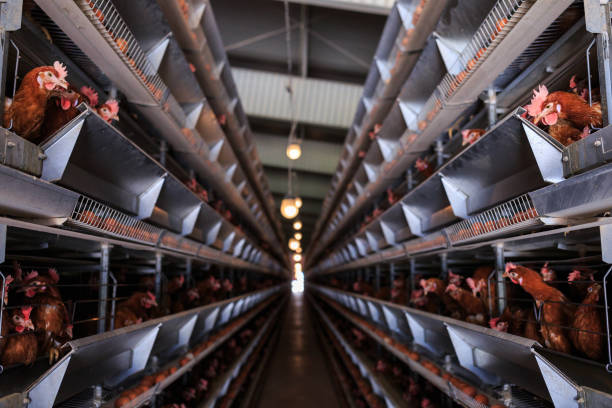
Medication and Vaccine Storage: Secure and temperature-controlled storage for medications and vaccines.
Record-Keeping System: Track production data, feed consumption, mortality rates, and other critical information.
Generator: Backup generator in case of power outages.
Incinerator/Disposal System: For proper disposal of dead birds and waste.
Cleaning and Disinfection Equipment: Pressure washers, disinfectants, and cleaning supplies.
Alarm System: Temperature and power failure alarm.
Pest Control: Rodent and insect control programs.
Choosing the Right Supplier
Selecting a reliable supplier is crucial for acquiring quality equipment and ensuring long-term success. Consider the following factors when choosing a supplier:
Experience and Reputation: Look for suppliers with a proven track record in the poultry industry.
Product Quality: Ensure the equipment meets industry standards and is made from durable materials.
Warranty and Support: A good supplier will offer a warranty on their products and provide technical support.
Spare Parts Availability: Check that spare parts are readily available locally or can be easily imported.
Price Competitiveness: Compare prices from different suppliers, but don’t sacrifice quality for the lowest price.
Considerations for the African Context
When selecting poultry cage equipment for the African context, consider the following:
Climate: Choose equipment that is suitable for the local climate, including temperature and humidity.
Electricity Supply: Select energy-efficient equipment and consider backup power options.
Water Availability: Ensure a reliable water source and implement water conservation measures.
Local Regulations: Comply with local regulations regarding poultry farming and animal welfare.
Maintenance and Repair: Choose equipment that is easy to maintain and repair locally.
Conclusion
Investing in the right poultry cage equipment is essential for building a successful and sustainable chicken farming business in Africa. This comprehensive checklist provides a roadmap for selecting the necessary equipment for both layer and broiler operations. By carefully considering the factors outlined above and choosing a reliable supplier, you can create a poultry farm that maximizes productivity, minimizes costs, and contributes to the growing demand for poultry products in Africa. Remember to prioritize bird welfare, biosecurity, and efficient resource management for long-term success. The future of poultry farming in Africa is bright, and with the right tools and knowledge, you can be a part of it!




